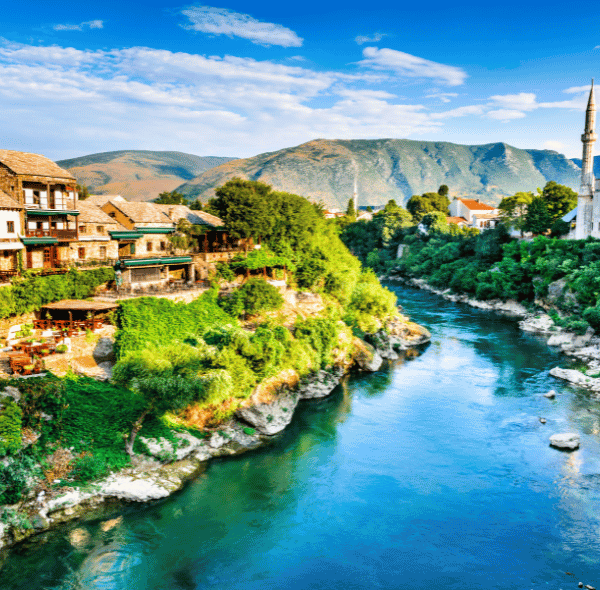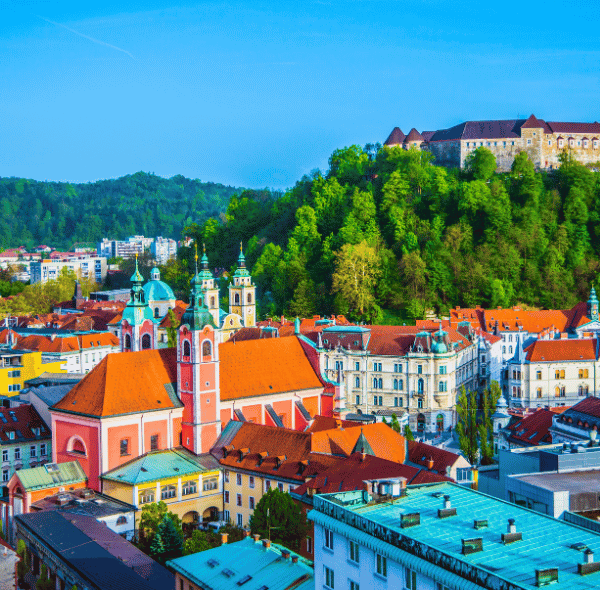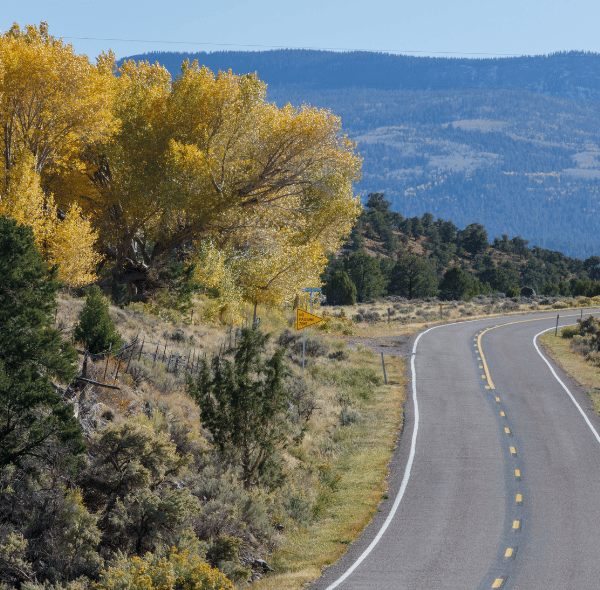
Balkan countries
The word “Balkans” can have different interpretations depending on whether you’re looking at it from a geographical, historical, or political angle, which makes it a challenging region to define clearly. Many travelers to Southeastern Europe find themselves confused by the variety of nations and the complex interactions between them. To help clarify things, our team of local specialists has put together a detailed guide to the countries in the Balkans.

How Did the Balkan Peninsula Get Its Name?
The name ‘Balkan Peninsula’ was first introduced by German geographer August Zeune in 1808, based on the false idea that the Balkan Mountains were the dominant mountain range stretching across Southeast Europe from the Adriatic to the Black Sea. Nowadays, we know that the Balkan Mountains extend only from the Serbian-Bulgarian border through Bulgaria toward the Black Sea. The latter word ‘balkan’ comes from an ancient Bulgarian word, probably taken from Turkish, meaning ‘mountain’, and possibly traces back to the Persian words bālkāneh or bālākhāna, meaning ‘high’ or ‘above’.

Borders of the Balkan Peninsula
Most geographers somewhat embrace the complex geography of the Balkan Peninsula, especially its specific northern borders: from the Black Sea, following the Danube River to Belgrade in Serbia, then along the Sava River into Slovenia. Beyond that point, the situation becomes a bit more complicated. Officially, it is believed to be on the Kolpa River, a natural border between Slovenia and Croatia, thus excluding Slovenia from the peninsula, while others stated that it should be projected on the Soča River, which is closer to the Italian border. The other borders are less intuitively obvious: to the west, the Adriatic coast; to the east, the Black Sea; and to the south, the Aegean and Ionian Seas. Based on these geographical boundaries, seven states fall wholly within the peninsula. But using political and cultural criteria shifts the number to ten, eleven, or even twelve. Confused yet? Fear not—read on.
Check Out the Complete List of Balkan Countries

SLOVENIA
Let’s start with Slovenia, long able to disengage itself from the association with the rest of the Balkan countries. Between Italy and Austria, it has long been more aligned with Central Europe, especially when it was part of the Habsburg Empire. After World War I, Slovenia joined other South Slavic nations in Yugoslavia. After the dissolution of Yugoslavia in 1991, however, Slovenia redeveloped close relations with Western Europe rather quickly and was the first former Yugoslav republic to accede to the European Union.
As mentioned, from a purely geographical point of view, Slovenia may not be regarded as belonging wholly or partially to the Balkan Peninsula, yet most of its historic and cultural ties did originate from there. Such a small country, yet incredibly varied, Slovenia stands at the crossroads of four distinct geographical regions.
• Area: 20,271 sq km
• Capital: Ljubljana
• Population: 2,095,861 (2020)
• Currency: Euro

CROATIA
Like Slovenia, Croatia struck out on its own with great success since the breakup of Yugoslavia in 1991 and only continues to grow stronger. One of the most striking features about Croatia is its absolutely stunning Adriatic coastline, which has formed the bedrock of its thriving tourism industry—an estimated 20 million visitors come each year, a significant number for a small nation of four million people. While Croatia was earlier considered a popular summer retreat for tourists from Central and Eastern Europe, over the years, it has established itself as one of the most popular tourist destinations in the world, offering a range of luxury experiences for the most demanding guests. It is common knowledge that places like Dubrovnik and Hvar are among the favorite summer resorts of Hollywood stars and professional athletes.
However, Croatia can offer so much more than beautiful islands and beaches. This country is steeped in history, replete with charming ancient towns, and tranquil unspoiled natural beauty protected by eight national parks.
- Area: 56,594 sq km
- Capital: Zagreb
- Population: 4,058,165 (2020)
- Currency: Euro

BOSNIA & HERZEGOVINA
Many people include Bosnia and Herzegovina among the first examples of Balkan countries, but it is more often recalled for its unfortunate involvement in the Yugoslav Wars, which marked the breakup of Yugoslavia. One of the key factors in this conflict was the strikingly unique ethnic diversity across the country. Coexisting together for many years were three large national and religious groups: Bosniaks, Serbs, and Croats. Increasing tensions and violence fueled the rise of nationalism. These three communities coexist today, and Bosnia and Herzegovina remains an exciting country because of its rich natural beauty, ranging from fresh water sources to an impressive mountain range, complete with delicious food. If you’re in search of a genuine, somewhat off-the-beaten-track experience, then Bosnia and Herzegovina should be included on your bucket list.
- Area: 51,129 sq km
- Capital: Sarajevo
- Population: 3,301,000 (2019)
- Currency: Convertible mark

MONTENEGRO
Much like Slovenia, Montenegro is small but remarkably diverse. Most visitors head for its stunning Adriatic coast with its immaculate white-pebble beaches, crystal-clear blue waters, and beautiful Venetian towns such as Kotor and Perast. Then there are places like Sveti Stefan, which has morphed from a humble fishing village into an exclusive island hotel, and Budva, which revels in its reputation as a lively tourist hotspot. However, Montenegro doesn’t stop at its coastline. The rugged inland mountains of the country offer breathtaking scenery for hiking, along with crystal-clear lakes, beautiful rivers, and amazing historical monuments such as Ostrog Monastery and the mausoleum of King Petar. For those adventurous enough to explore, Montenegro is a small Balkan country with something for everyone—so now is the time to visit before its hidden gems become more widely known!
- Area: 13,812 sq km
- Capital: Podgorica
- Population: 622,359 (2018)
- Currency: Euro

SERBIA
One of the most powerful republics in former Yugoslavia, Serbia has traditionally been rather isolated, especially after violent conflicts during the 1990s and most specifically after the NATO bombing of Belgrade in 1999. Pressed by the international community, Serbia finally pulled its forces out of Kosovo, restoring calm in the province, though tensions between Serbs and Kosovar Albanians persist, particularly with Kosovo declaring independence, which Serbia has not yet recognized. Over the past years, however, Serbia has started to reconnect with the world and is making important steps toward European Union membership.
Top of Form
A less touristy country, Serbia nonetheless offers something of an authentic experience. It’s a particular favorite among younger travelers, with Belgrade billed as the “party capital of the Balkans,” and the Exit Festival in Novi Sad touted as the best festival of its kind in Europe.
- Area: 77,474 sq km
- Capital: Belgrade
- Population: 6,963,764 (2019)
- Currency: Dinar

KOSOVO
Welcome to Kosovo, the youngest country in both the Balkans and Europe! Although its status is still disputed, with only around half of the UN member states recognizing it, Kosovo has achieved impressive improvements since declaring independence from Serbia in 2008. Grateful for strong international support, particularly from the EU, this small nation at the heart of the Balkans is undergoing rapid development. To understand the local dynamic, note that Kosovo’s population is predominantly Albanian (88%), with a small Serbian minority (7%). Optimism for the future is palpable during a walk through Priština, the newest capital in the Balkans. Undiscovered and authentic, Kosovo is among the most compelling destinations in the Balkans.
- Area: 10,887 sq km
- Capital: Priština
- Population: 1,873,160 (2020)
- Currency: Euro
Are you ready for a Balkans adventure? We are proud locals who cannot wait to introduce you to one of the most diverse regions on the planet. Our team is here to help you craft a tailored itinerary full of unique travel experiences. We offer bespoke private trips to the Balkans, know all the hidden gems, and are happy to guide you through the best this beautiful region has in store. To know more, please search for us on our website at Zadventuro.com and allow us to help you plan your dream venture.



